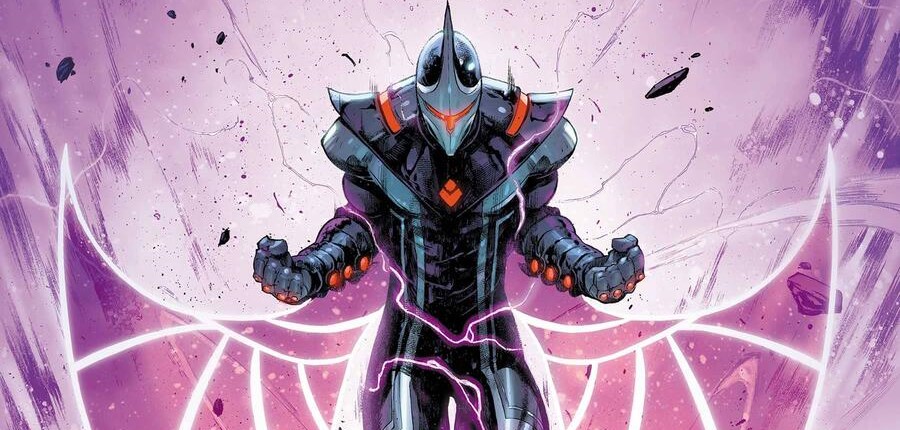Reprise of ‘DarkHawk’ Marvel Comic Features Superhero With MS

Illustration by Iban Coello
The cover of the first issue of "Darkhawk."
The main character of a new, five-issue reprise of the original “Darkhawk” Marvel comic battles crime while navigating his way through being newly diagnosed with multiple sclerosis (MS).
Connor Young, a 17-year-old high school senior and basketball star, has his life turned upside down with this news, when he discovers an amulet that allows him to switch bodies with an android from another dimension through a synaptic link.
Marvel asked the comic book writer Kyle Higgins to revisit the series for a 30th anniversary celebration of the superhero. Its first issue was published on Aug. 25, and the third book in the series is set to be released on Nov. 3.
It was Higgins’ idea to bring MS into the character’s story through his own family and friends’ experiences with MS, and a curiosity as to how a neurodegenerative disease would affect Darkhawk.
“Multiple sclerosis is something I’ve been aware of for a long time,” Higgins said in a video interview with MS News Today. “Building a character who controls their superhero form by way of a synaptic link, and is then diagnosed with a neurodegenerative condition felt like a really interesting avenue to head down.”
Higgins spent time researching MS by talking to people close to him with the disease, and to other members of the community like Brooke Pelczynski, a comics artist and illustrator who also has MS.
An interview Higgins conducted with Pelcynski is included at the end of the first issue of “Darkhawk.” Higgens also spoke with others from the MS community for future back-of-book Q&As.
“It’s very, very cool to see MS in the mainstream where it’s not portrayed as some super-debilitating disease,” said Pelcynski in the edited transcript. “And it’s nice to see a character go through the diagnosis process — which is the worst part — and then see them do something with it.”
The sensitive nature of writing about a disease like MS is not lost on Higgins, who said he spent extra time to ensure Connor’s experience would be as accurate as possible. Creating “Darkhawk” has been an opportunity to introduce the disease to those who otherwise might never have heard of it.
“That’s a tremendous opportunity,” Higgins said. “But it’s also a tremendous responsibility to make sure that you do the work and you handle the topic right.”
The first issue opens with Connor shooting a three-pointer in the final six seconds of a school basketball game. Readers learn he has a scholarship to the fictional ESU, and is planning on a pro career.
In the locker room, Connor is strongly affected by the heat — heat intolerance being able to exacerbate such symptoms of MS, as fatigue, blurred vision, loss of balance, or memory and concentration difficulties. The next day he complains about a headache. He goes for a run to “clear his head,” but falls and hits his head on the curb.
That episode prompts a medical exam that leads to the MS diagnosis.
“A lot of this book is, by design, focused on what Connor’s life is and the very idea of who he thinks he was supposed to be,” Higgins said. “And now coming to terms with the possibility that that might not be possible.”
In the final third of the first issue, he falls upon an amulet that transforms him into Darkhawk, saving a construction worker from an explosion and foiling a robbery.
The rest of the miniseries will mix Connor’s mental and physical battle with MS with acts as Darkhawk to save his neighborhood.
“The disease is a part of his life now and that’s not going to change. So it’s going to require Connor to recalibrate a little bit,” Higgins said. “But so will being a superhero.”
Connor is not the first Marvel superhero who has had to overcome a major health challenge like MS. Jane Foster, a character from the “Thor” comics, battles breast cancer while at the same time wielding Mjolnir to protect Earth and Asgard. Daredevil is blind, yet he wields incredible powers.
Creating characters who have flaws is what Marvel is known for, Higgins said. These superheroes with their powers stripped away are people who look like us, people who feel the same things we do.
“The idea of introducing a character with multiple sclerosis is, in a lot of ways, very in line with the legacy and tradition that has defined Marvel for so many years,” Higgins said.







